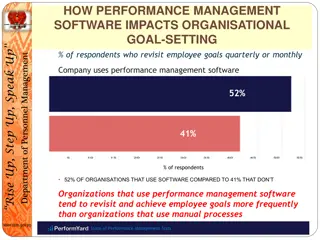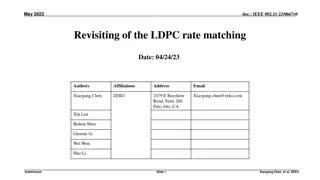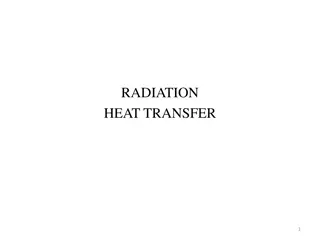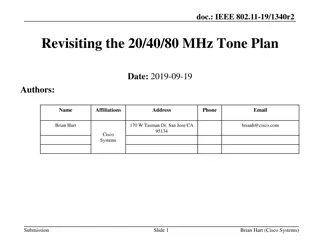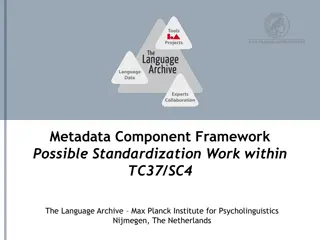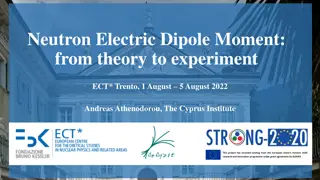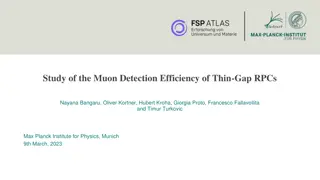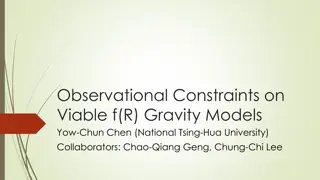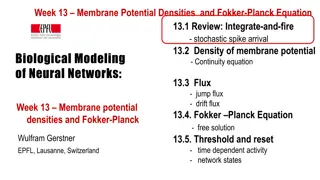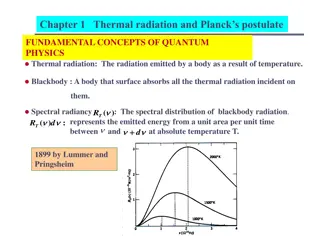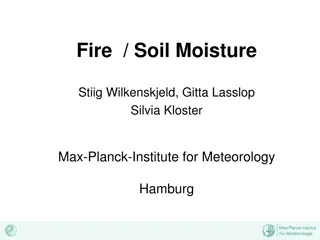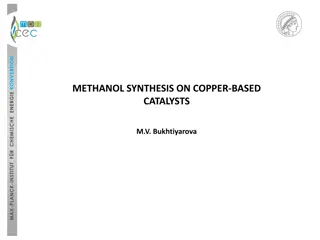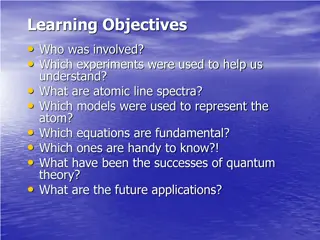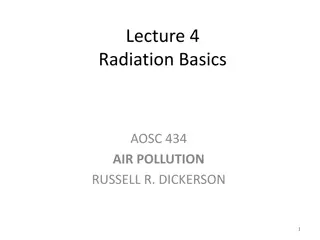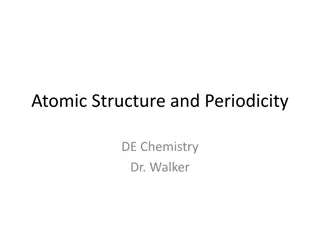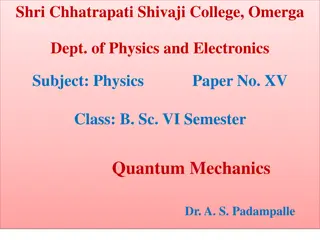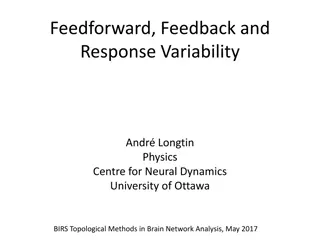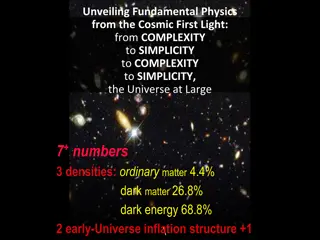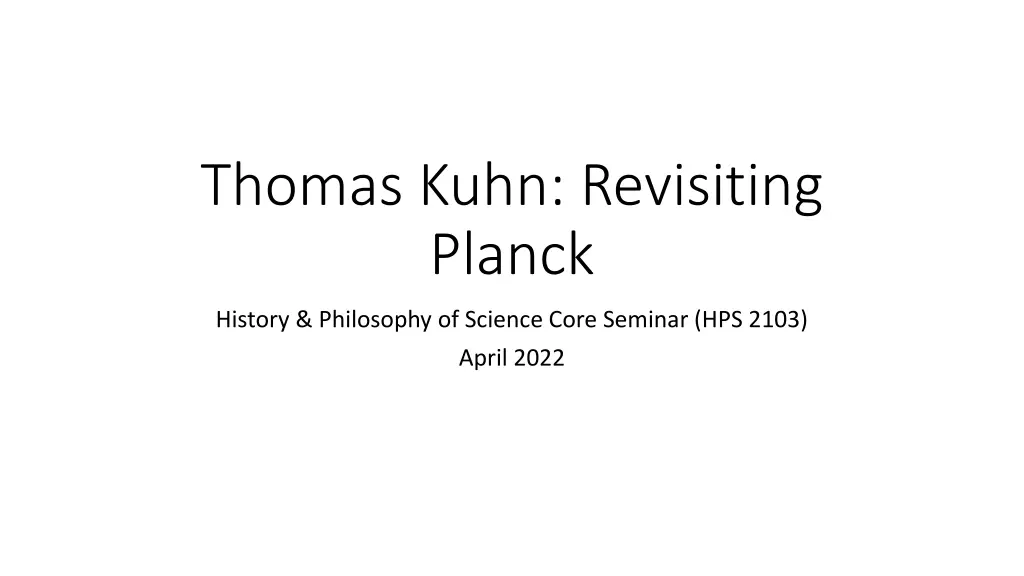
Revisiting Thomas Kuhn: Quantum Discontinuity and Historical Interpretations
Delve into the historical and philosophical implications of Planck's black-body theory, the discovery of quantization by Einstein and Ehrenfest, and the reinterpretation of Planck's work, shedding light on the nature of knowledge and scientific development.
Download Presentation

Please find below an Image/Link to download the presentation.
The content on the website is provided AS IS for your information and personal use only. It may not be sold, licensed, or shared on other websites without obtaining consent from the author. If you encounter any issues during the download, it is possible that the publisher has removed the file from their server.
You are allowed to download the files provided on this website for personal or commercial use, subject to the condition that they are used lawfully. All files are the property of their respective owners.
The content on the website is provided AS IS for your information and personal use only. It may not be sold, licensed, or shared on other websites without obtaining consent from the author.
E N D
Presentation Transcript
Thomas Kuhn: Revisiting Planck History & Philosophy of Science Core Seminar (HPS 2103) April 2022
The Main Theme A summary of the central thesis and of the main arguments relevant to the evaluation of the book Black-body theory and the quantum discontinuity, 1894-1912 To indicate what, beyond the historical facts of the matter, seems to me to be at stake. To help with clarifying what this book is actually about and what is its relationship with Structure of scientific revolutions
Two Alternative Interpretations Planck had discovered that restricting energy levels to a discontinuous spectrum was essential to the derivation of the black-body radiation law. The restriction for Planck was actually on cell size, not on resonator energy, and it did not therefore bring to mind anything like quantization.
Whats the Point? Quantization of energy (quantum) was discovered by Einstein and Ehrenfest not Planck. To get historical facts straight. To provide correct data to philosophy of science and epistemology to better understand the nature of knowledge and its development.
Evidence for the Traditional Interpretation The way Planck computes the probability of an energy distribution, the probability which he then converts to entropy by taking its logarithm. Planck's derivation has been taken to be modeled on Boltzmann's probabilistic derivation of the distribution law for gases.
The First Evidence for the New Interpretation There is no mention of discontinuity, any talk of a restriction on resonator energy, or any formula like U = nhv, with U the energy of a single resonator and n an integer in early known works of Planck, published or unpublished. The new interpretation makes the development of Planck s black-body research both more nearly continuous and also a deeper, more elegant piece of physics than it appears in the standard version. As almost always happens in historical reinterpretation, the new narrative is more continuous than its predecessor. But why a more continuous narrative is considered more likely?
The Second Evidence for the New Interpretation The reinterpretation eliminates a number of the apparent textual anomalies and inconsistencies that have led to talk of Planck s conservatism, of his confusion, and of his good luck in finding within Boltzmann's work the probabilistic formula he needed while failing entirely to see how properly to derive that formula from his model. In short, the Planck who appears in the reinterpretation is a better physicist--less a sleepwalker, deeper and more coherent--than the Planck of the standard story.
The Third Evidence for the New Interpretation Planck's behavior at the time when he was at last persuaded that his derivation demanded discontinuity. While there was no mention of discreteness of energy spectrum in his earlier works, from 1908-09 and after being convinced by Lorentz, such statements regularly appear in Planck s works. Also, there are two significant alternations in his technical vocabulary after 1908, namely the use of energy quantum instead of energy element and oscillator to replace resonator .
Relation to Structure We should substitute evolution-from-what-we-do-know for evolution-toward-what-we-wish-to-know. The wrenching experience of entering into an older mode of thought is the source of my references to gestalt switches and revolutions; difficulties in translating the discoverer's language into our own are what led me to write also of incommensurability; and paradigms were the concrete examples needed since definition in words was impossible to acquire the language of the older mode. Is Kuhn reinterpreting his own works here too?
Histographic Lessons Historians must approach the generation that held them as the anthropologist approaches an alien culture. They must, that is, be prepared at the start to find that the natives speak a different language and map experience into different categories from those that they themselves bring from home. And they must take as their objective the discovery of categories and the assimilation of the corresponding language.
Resistance Involved in Entry into a Discoverer s culture Systematic distortions of memory, both the discoverer s memory and the memory of many of his contemporaries, are a first manifestation of resistance. (e.g., Kuhn s meetings with Stern and Bohr) Another, regularly found among members of later generations, is the attribution of real or supposed anomalies in discoverer's behavior to "confusion . Is it actually that common?
Gems In Salzburg in 1909, Einstein comment reveals the problem in Planck s mathematics for the first time. Planck was finally convinced by Lorentz s 1908 talk in Rome. The paper is fun to read, but could be structured better. Also, it has some continental ring (unsupported over-generalization and unclarity). Kuhn s interviews
How H and P are Integrated? Kuhn: - If history (or ultimately philosophy) is to be learned from the texts that are my main sources, then I must minimize the role of prior conviction in my approach to them. - Often I do not know for some time after my historical work is completed the respects in which it does and does not fit Structure. Is it possible though?

